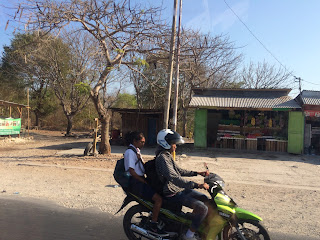Recent
Survey Shows Shift in Rider Demographics
Ivine, CA (PR Newswire)- According to a recent survey,
nearly 1 in 5 motorcycle owners in America is now female, compared with 1 in 10
less than a decade ago, based on data accumulated by the Motorcycle Industry
Council. In fact, the data suggests that women may soon comprise ¼ of total
motorcycle ownership in the U.S., a major shift in motorcycling demographics.
Among all age groups surveyed, women riders now make up
fully 19% of American motorcycle owners. The survey showed the greatest growth
among the younger generations, with Gen X women riders up to 22%, and Gen Y
(Millennials) up to 26% female ownership.
“As the number of Boomer and mature motorcyclists shrink and
are replaced by newer riders, we could soon be looking at a solid 25% of
motorcycle owners being female,” stated Andria Yu, MIC Director of
Communications. “We’ve seen with our own eyes many more women riders- on the
roads, on the trails, on the track, with families, at motorcycling events,
forming clubs and just being a part of everyday group rides. Many people in the
industry have worked some 30 years to achieve this, and now the data confirms
it: More and more women are getting out there and enjoying motorcycles.”
The MIC polled 2,472 adults nationwide for the 2018
Motorcycle/ATV Owner Survey. For decades, the MIC has served as the census
board for American motorcycling, and they have tracked this steady growth in
women owners/riders over the years. In fact, major efforts to invite more women
into the world of motorcycling dates back to the late 1980s, when manufacturers
and distributors formed the “Discover Today’s Motorcycling” initiative in an
effort to encourage and introduce new riders to the sport. Cam Arnold, an
industry exec and organizer of the “Women in Powersports” event last week in
New York, stated “Throughout the 1990s and on till today, the big brands have
dedicated increasing amounts of attention to the women’s market, and we’ve
simply seen more and more positive imagery on TV, in movies, and in many
mainstream settings where women on motorcycles are just having fun.”
Despite some studies that motorcycle ownership seems to have
declined overall in the past 10 years, the MIC report indicated that motorcycling
has actually grown in popularity and acceptance in American culture in recent
decades, according to their survey. They found that 66% of women riders say
their family and friends have a positive attitude toward motorcycles and
scooters. Good news, indeed.
For more information on the Motorcycle Industry
Council, visit their website: www.mic.org 

























































